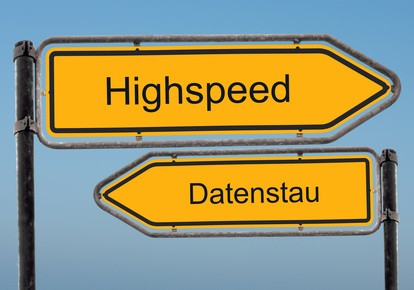Bits and bytes are units of measurement in terms of data transfer. A byte consists of eight bits. If a “k” is in front of the unit of measure, it denotes “kilo” and stands for a thousand. Thus, if a data transfer is labeled kBit/s, it would mean that a thousand bits per second (s) are transmitted. Typically, however, the DSL providers use the term Mbps instead of kBit/s. In this case, the “M” stands for Mega and stands for a thousand. However, it is completely indifferent to whether the DSL offerings are specified by an Internet service provider with 16,000 kbit’s or 16 Mbps.
Thus, x`megabits per second are a dimension for transmission speed, based on bits per second. Specifies how many millions of bits are transmitted per second over the network.
Table of Contents
DOWNLOAD AND UPLOAD SPEEDS
When it comes to DSL speed, a distinction must be made between upload and download speed. When data is downloaded from the Internet to the computer, the transfer rate, which indicates the download speed, is always important. But also retrieving the emails, browsing on web pages or viewing pictures or videos is one of the downloads. When uploading computer files to the Internet, the transfer rate is called upload speed. As a rule, the download speed is faster than the speed for the uploads, because usually more data is downloaded from the Internet than uploaded. Therefore, the download speed is also of greater interest to users than the upload speed. Although some Internet providers do not specify the upload speed, this is of great importance for some users, for example, if a website or even a web server is operated, and should therefore always be requested from the respective provider.
THE MAXIMUM SPEED
A large number of Internet providers currently competing on the market often offer download speeds of up to 16 Mbps. Maximum transmission rates of 16 Mbps are then achieved. However, only the theoretical maximum speed is given here, which in practice can look quite different? For example, high network usage can slow down Internet speed. However, the speed that can ultimately be achieved on the Internet is also always dependent on the other person. So if you want to access a website that is operated by an outdated computer with a telephone modem, the user does not use his own fast technology much. A slow browser or outdated hardware can also slow down transfer rates.
WHAT ARE THE MAXIMUM INTERNET SPEEDS POSSIBLE?
If you have a DSL port of less than 10 Mbps, you should consider a DSL alternative for a higher transfer rate. For example, VDSL theoretically achieves speeds of up to 50 Mbps. However, since the VDSL also runs over a copper line, the bandwidth decreases sharply here as well. The longer the copper cable connection, the lower the transmission rate. This is still a problem, especially in rural areas.
Higher speeds in terms of transmission rates can be achieved with fiber glass, because these lines are not bound to the physical limits of the copper cable. With FTTH, the fiber optic cables are placed directly up to the front door, so that theoretical maximum speeds of up to 200 Mbps can be achieved here. Unfortunately, fiber optic cables are not very often available, as the expansion in the Federal Republic is still shunned due to the high costs. Currently, there is a fiber-optic availability of 1.1 percent in Germany, which is relatively low. In Latvia, the availability of fiber is now 31 percent.






















